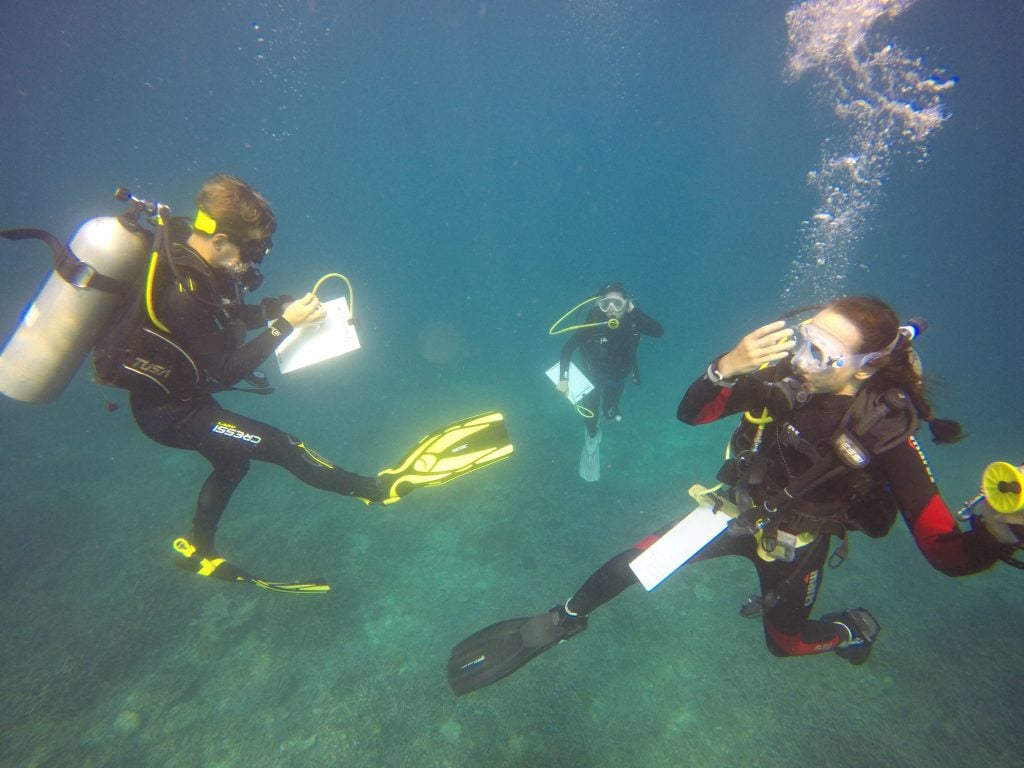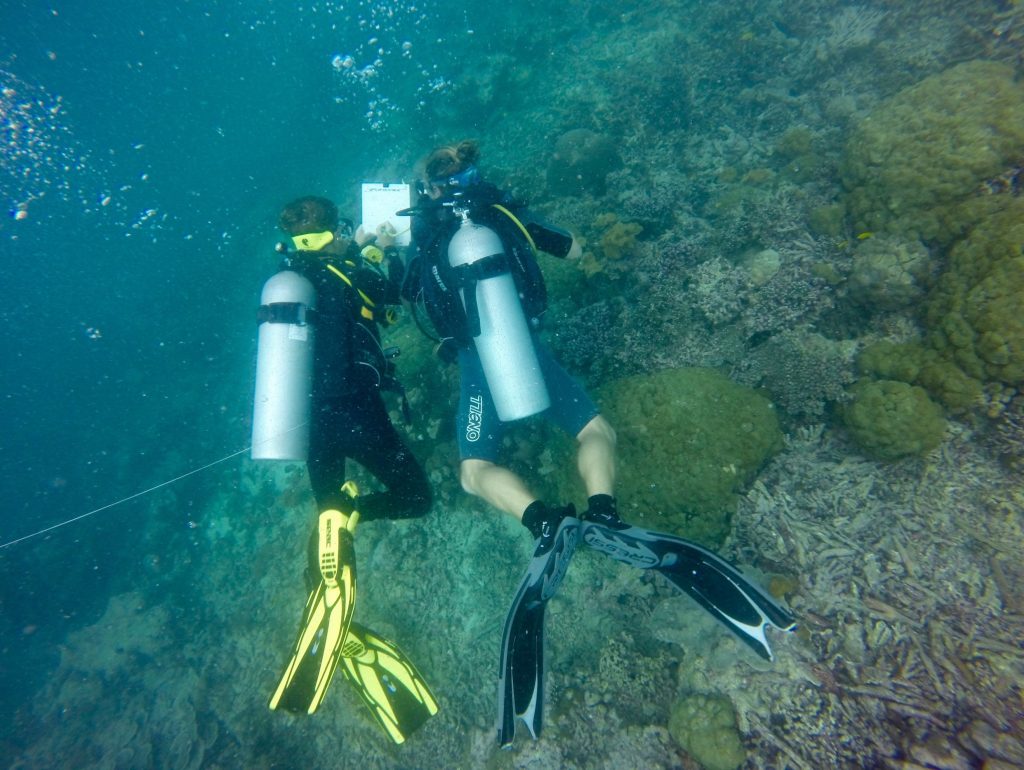From the postcard-perfect Coral Bay to the hidden beauty of Secret Cove, these spots promise stunning photos and unforgettable views.
GVI
Posted: August 29, 2024

Posted: November 4, 2018
Hi, my name is Luca, and I’m one of the volunteers studying at Cap Ternay. I’ll be talking a little bit about what our main work is while on base. Depending on how long one is staying on base, volunteers are assigned different survey groups. Generally, volunteers will survey Fish (divided into Groups I or II), or Invertebrates. Those staying longer may instead be assigned to study Coral. Fish Group I deal with reef fish while Group II focuses more on fish species of commercial importance. The subjects of Fish Group II are generally those that can be found at fish markets in Victoria or the Barbecue on the Beau Vallon Beach promenade. As Fish Group II takes longer and is harder to study, you’ll generally be assigned it if your stay reaches a length of two months or more. The Fish Group II species surveyed are Snappers, Emperors, Groupers, Parrotfish, Triggerfish, Rabbitfish and Wrasses.
Spot the fish!
To get certified for the actual surveys you’ll have to pass a written exam, and then go on Fish Spot dives. Fish Spot dives are where we practice identifying all the species we study on base while underwater. Fish Spot dives go as follows: the dive leader, a staff member who has mastered our assigned survey groups, will point out certain fish throughout the dive. The group on the spot (usually 2-3 divers) will then have to identify the fish using our dive slates to write down their names. The dive leader will then note if you got it right or wrong, pointing out certain features to look out for if you happened to miss an identification. This can be a lot harder than it sounds, as some species in the wild can change colour and appearance, and juveniles of certain fish can look completely different compared to their adult equivalents. It’s certainly more challenging than looking at still pictures. The more and more we dive and go on Fish Spots however, the easier identifying each one becomes.

Exploring the Seychelles Underwater wonders
While conducting our Fish Spots, I discovered a lot of different dive sites around Cap Ternay and the northwest of Mahé Island, as different species choose different types of environments to live in. In order to spot all those in Fish Group II, we dove in locations such as our Baie Ternay Reef, as well as sites like Twin Barges, a shipwreck located in the Beau Vallon Bay. Some species, like the Coral Hind Grouper and the Tripletail Wrasse, are very common. On the other hand, there are species (like the Tomato Grouper) that you’ll be very unlikely to spot on a dive. While you might not spot all your assigned Fish, there is a chance of having encounters with megafauna during our dives. Some megafauna we’ve run into while diving includes Rays, Turtles, Sharks, Bumphead Parrotfish, Squids or even Whalesharks (if you are very, very lucky!).

Moving from Spots to Methodology dives
Once you’ve passed your exam and identified all species (or as many as possible) on Fish Spots, we are taught survey methodologies and we can finally start surveying. The surveys (either one Stationary Point Count Survey and a Belt (a reeled out tape), or two Stationary Point Count Surveys) are always conducted together with a Fish Group I diver. On a Stationary Point Count Survey, both divers will note down all the species spotted in an area with a 7m radius for 7 minutes. Belts are done as follows; the Fish Group II diver leads with his compass, keeping track of the depth and direction while noting down all the species they spot. The Fish Group I diver swims behind, reeling out a 50m tape. After the 50m are covered (which generally takes 10 minutes), roles are switched and the Fish Group II diver reels the tape back in while the Fish Group I diver notes down all the species he spots.

Where does the data go?
It seems like a lot of work, but volunteers will usually study together and come up with methods of identification, and Fish Spot dives can be quite fun! Staff is always willing to sit down and help us study as well. Our hard work eventually pays off, however: Fish sightings on our surveys are noted down in the office on base. The data collected from our dive sites is sent to the SNPA (Seychelles National Park Authority), who uses our data to evaluate reef health and species diversity in the Seychelles. It’s quite exciting to see our hard work contribute to a growing database here in the Seychelles and to watch us learn to be experts in our fields of study. Hopefully we can take these skills and go on to educate more people, inspiring more to familiarise themselves with the sea.
I hope this is a good look into the sort of work done on Cap Ternay, and that it inspires more people to come and help contribute to our efforts here on base
From the postcard-perfect Coral Bay to the hidden beauty of Secret Cove, these spots promise stunning photos and unforgettable views.
GVI
Posted: August 29, 2024